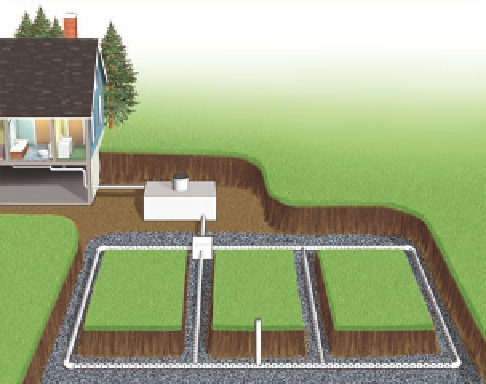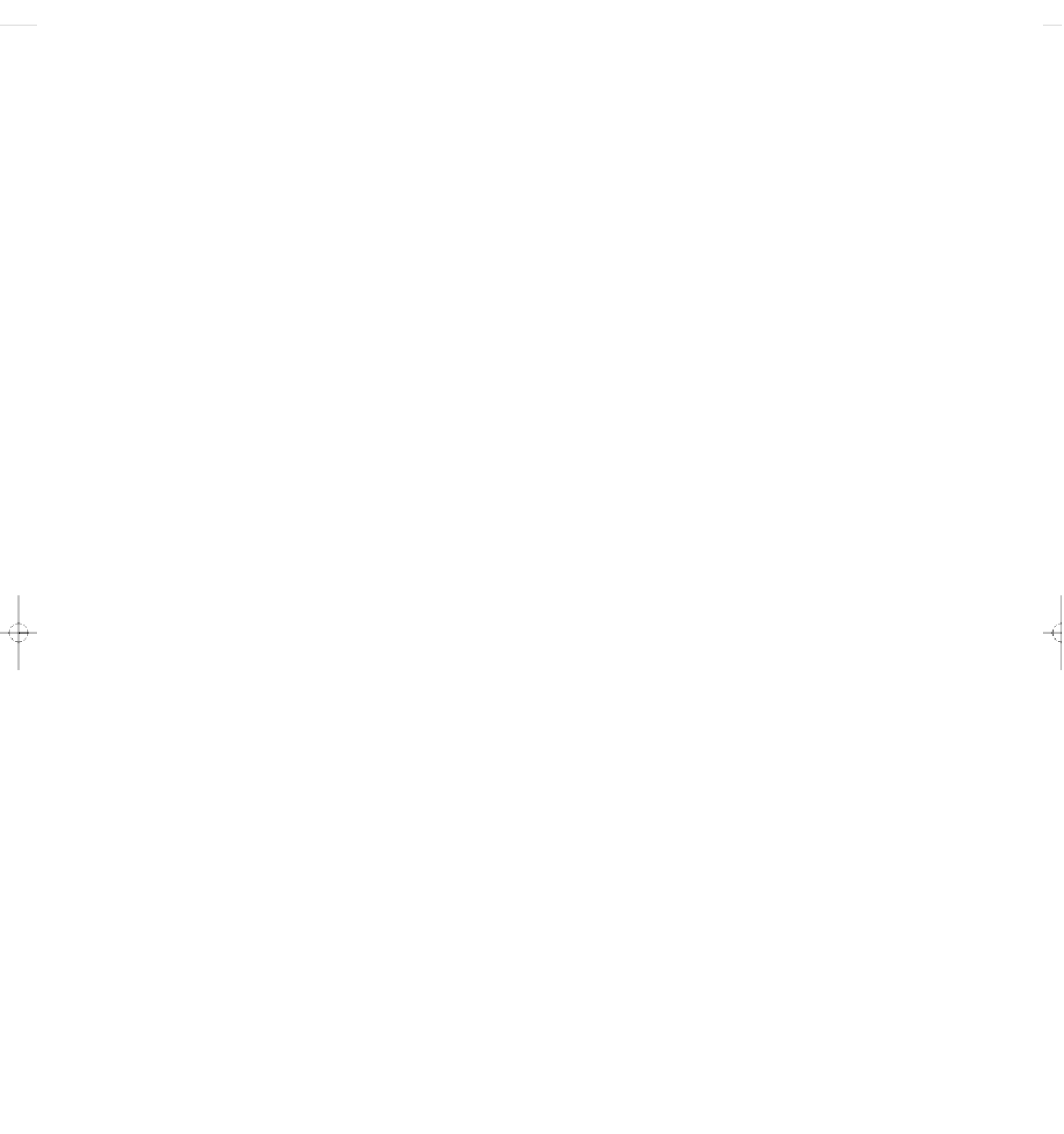Environmental Engineering Reference
In-Depth Information
Before discharge, water from primary, secondary,
or more advanced treatment undergoes
bleaching
to re-
move water coloration and
disinfection
to kill disease-
carrying bacteria and some (but not all) viruses. The
usual method for accomplishing this is
chlorination.
However, chlorine can react with organic materials in
water to form small amounts of chlorinated hydrocar-
bons. Some of these chemicals cause cancers in test an-
imals and may damage the human nervous, immune,
and endocrine systems.
Use of other disinfectants, such as ozone and ul-
traviolet light, is increasing. These options cost more
and their effects do not last as long as chlorination.
Household
wastewater
Septic tank with
manhole (for cleanout)
Nonperforated pipe
Distribution box (optional)
Gravel or
crushed
stone
Drain
field
Vent pipe
Science: Improving Sewage Treatment
Preventing toxic chemicals from reaching sewage
treatment plants would eliminate such chemicals from
the sludge and water discharged from such plants.
Environmental scientist Peter Montague calls for re-
designing the sewage treatment system. The idea is to
prevent toxic and hazardous chemicals from reaching
sewage treatment plants and thus from getting into
sludge and the water discharged from such plants.
Montague suggests several ways to do this. We
could require industries and businesses to remove
toxic and hazardous wastes before sending water to
municipal sewage treatment plants. We could also en-
courage industries to reduce or eliminate their use and
waste of toxic chemicals.
Another suggestion is to have more households,
apartment buildings, and offices eliminate sewage
outputs by switching to waterless
composting toilet sys-
tems.
Such systems would be cheaper to install and
maintain than current sewage systems because they
do not require vast systems of underground pipes con-
nected to centralized sewage treatment plants. They
also save large amounts of water.
Perforated pipe
Figure 11-32
Solutions:
septic tank system
used for disposal
of domestic sewage and wastewater in rural and suburban ar-
eas. This system separates solids from liquids, digests organic
matter and large solids, and discharges the liquid wastes in a
network of buried pipes with holes located over a large
drainage or absorption field. As these wastes drain from the
pipes and percolate downward, the soil filters out some poten-
tial pollutants, and soil bacteria decompose biodegradable ma-
terials. To be effective, septic tank systems must be properly in-
stalled in soils with adequate drainage, not placed too close to-
gether or too near well sites, and pumped out when the settling
tank becomes full.
In rural and suburban areas with suitable soils, sewage
from each house usually is discharged into a
septic
tank
(Figure 11-32). One-fourth of all homes in the
United States are served by septic tanks.
In U.S. urban areas, most waterborne wastes from
homes, businesses, factories, and storm runoff flow
through a network of sewer pipes to
wastewater
or
sewage treatment plants.
Raw sewage reaching a treat-
ment plant typically undergoes one or two levels of
wastewater treatment. The first level,
primary sewage
treatment,
is a
physical
process that uses screens and a
grit tank to remove large floating objects and solids
such as sand and rock, and a settling tank that allows
suspended solids to settle out as sludge (Figure 11-33).
A second level,
secondary sewage treatment,
is a
bio-
logical
process in which aerobic bacteria remove as
much as 90% of dissolved and biodegradable, oxygen-
demanding organic wastes.
Because of the Clean Water Act, most U.S. cities
have combined primary and secondary sewage treat-
ment plants. According to the EPA, however, at least
two-thirds of these plants have sometimes violated wa-
ter pollution regulations. Also, 500 cities have failed to
meet federal standards for sewage treatment plants,
and 34 East Coast cities simply screen out large floating
objects from their sewage before discharging it into
coastal waters.
Solutions: Treating Sewage by Working
with Nature
Natural and artificial wetlands and other ecological
systems can be used to treat sewage.
John Todd has developed an ecological approach to
treating sewage, which he calls
living machines
(Fig-
ure 11-34). His purification process begins when
sewage flows into a passive solar greenhouse or out-
door sites containing rows of large open tanks popu-
lated by an increasingly complex series of organisms. In
the first set of tanks, algae and microorganisms decom-
pose organic wastes, with sunlight speeding up the
process. Water hyacinths, cattails, bulrushes, and other
aquatic plants growing in the tanks take up the result-
ing nutrients.
After flowing though several of these natural pu-
rification tanks, the water passes through an artificial





